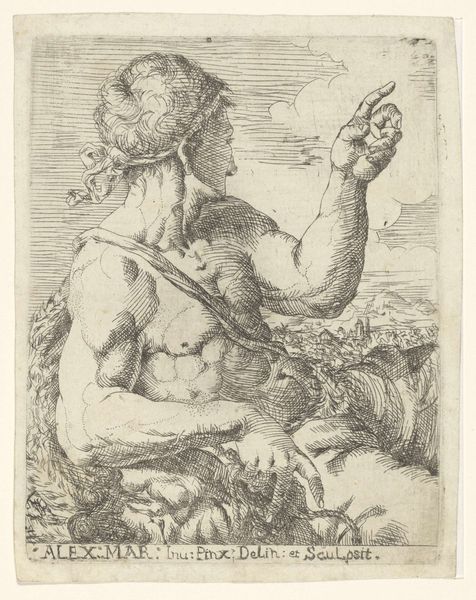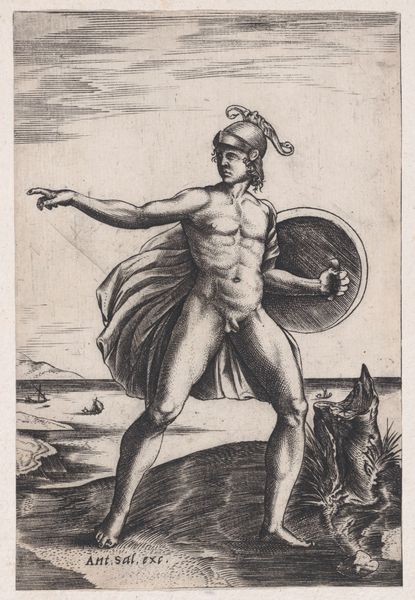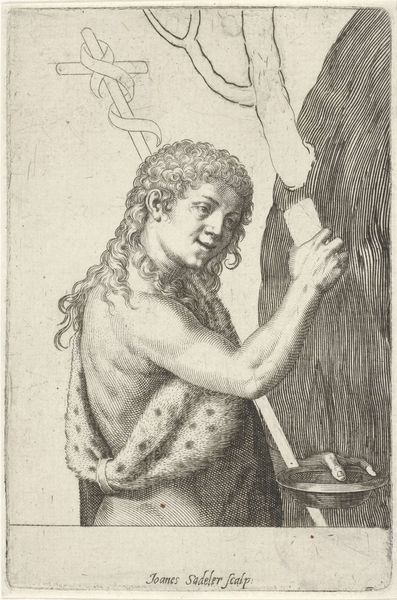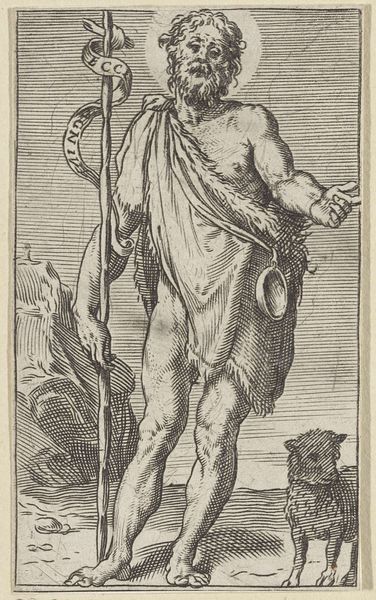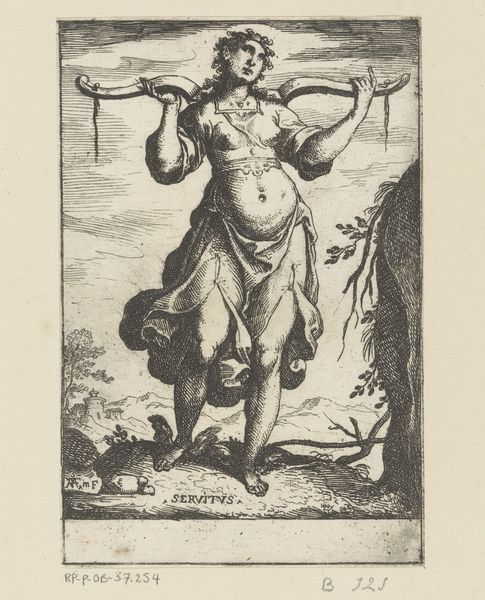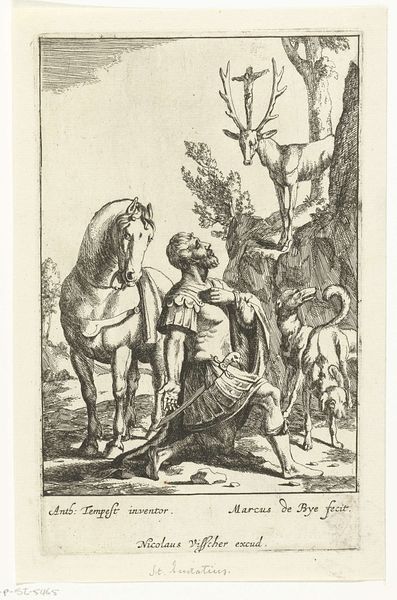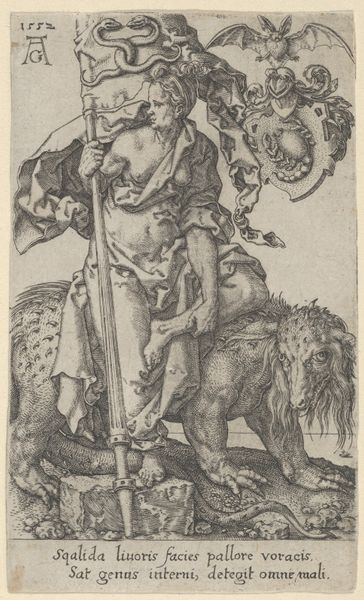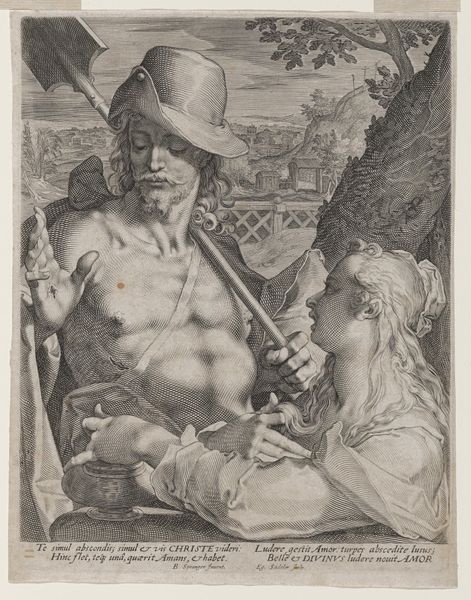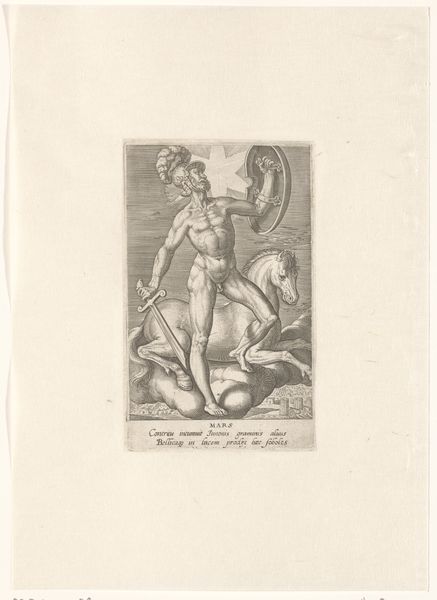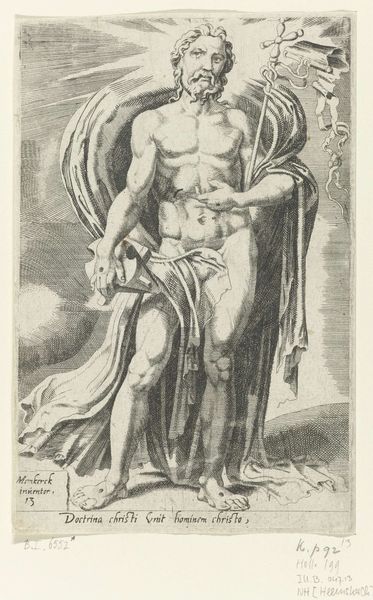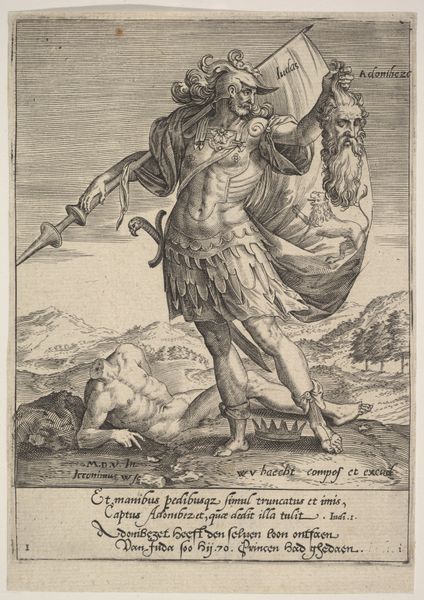
print, engraving
#
portrait
#
baroque
# print
#
old engraving style
#
figuration
#
portrait drawing
#
history-painting
#
engraving
Dimensions: height 143 mm, width 130 mm
Copyright: Rijks Museum: Open Domain
This engraving presents John the Baptist with a lamb and a cross. The lamb, often referred to as Agnus Dei, has been used since early Christian art to symbolize Christ's sacrifice and innocence. The symbol appears as early as the 3rd century AD in the Roman catacombs, and echoes through time in works by Jan van Eyck and Francisco de Zurbarán. Yet, long before Christianity, the lamb held ritual significance in pagan traditions, often associated with fertility and renewal. This symbol's journey through history has seen numerous shifts, reflecting humanity's enduring search for meaning and redemption. Consider the emotional power of sacrifice and innocence conveyed through this tender lamb. It embodies a deep, subconscious connection to humanity's primal fears and hopes, engaging viewers on a profound level. This cyclical progression has resurfaced, evolved, and taken on new meanings, illustrating our continuous struggle to comprehend our place in the cosmos.
Comments
No comments
Be the first to comment and join the conversation on the ultimate creative platform.
